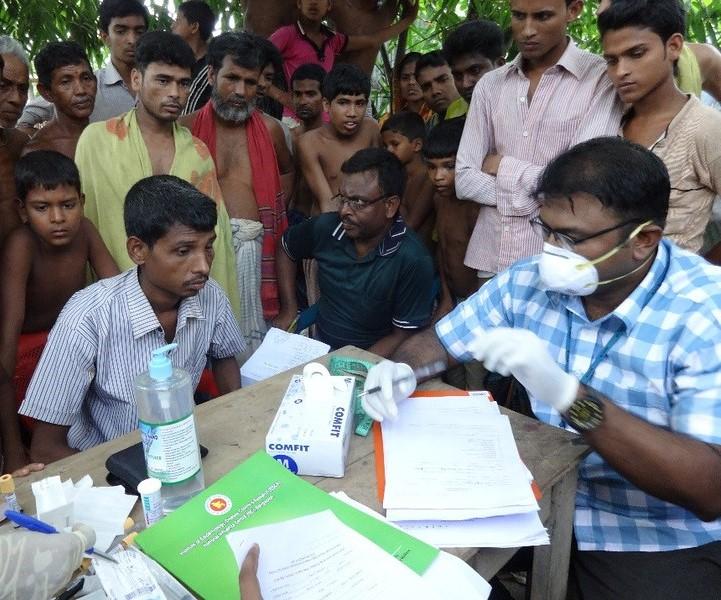New research by scientists from the United Kingdom and Africa suggests a long-standing practice of using antibiotics to test whether an individual may have tuberculosis (TB) is an unreliable method for diagnosing the disease.
In a systematic review and meta-analysis of a handful of studies that investigated the use of trial antibiotics as a diagnostic test in adults with TB symptoms, the researchers found that trial antibiotics performed poorly in ruling TB in or out in suspected cases, with sensitivity and specificity estimates that were well below internationally recommended standards for TB diagnostics.
The authors of the paper say the results call for reconsideration of the practice, which has been recommended by the World Health Organization (WHO) and national TB programs for more than 30 years.
"Despite more than 30 years of international guidelines and national algorithms promoting the trial of antibiotics for tuberculosis diagnosis, the small amount of data presented here on its diagnostic utility do not support the underlying rationale," the authors wrote yesterday in The Lancet Infectious Diseases.
They also suggest the use of antibiotics during TB investigations should be minimized to reduce the potential for promoting antibiotic resistance.
Widely used diagnostic method
Timely TB diagnosis is considered one of the most effective ways to ensure that patients get effective treatment for the disease, which causes an estimated 10 million deaths a year, the most of any infectious disease. Current diagnostic tests for TB have generally been suboptimal, however, missing many cases. In addition, they are frequently unavailable in the low-resource settings where most TB cases occur.
As a result, one of the standard diagnostic algorithms endorsed by the WHO is to give suspected patients with respiratory symptoms but negative sputum mycobacteriology a course of broad-spectrum antibiotics that are inactive against Mycobacterium tuberculosis but could treat other respiratory bacterial infections. The theory behind trial antibiotics is that if the patients' symptoms resolve after a few days of antibiotic treatment, then they likely had a bacterial upper respiratory infection but do not have TB. But if the symptoms remain, they should be further evaluated or started in treatment.
In its 1997 guidelines for TB treatment, the WHO included the absence of a clinical response after 1 week of trial antibiotics as part of the case definition for smear-negative TB. Although the agency has since then taken a more cautious approach on trial antibiotics over concerns about antibiotic resistance, the strategy remains widely used in many low-resource countries.
The authors of the paper, a team led by researchers from the London School of Hygiene and Tropical Medicine, the University of Malawi College of Medicine, and the Malawi Liverpool Wellcome Trust Clinical Research Programme, estimate that at least 26.5 million courses of antibiotics are prescribed per year under this practice. Yet despite this widespread use, no systematic review has assessed the diagnostic performance of trial antibiotics.
To assess the evidence for the diagnostic accuracy of trial antibiotics, the researchers screened 9,410 studies published from 1993 through March 2019 that included adults being investigated for TB using both trial antibiotics and sputum-based mycobacteriology tests. After a full-text review, eight studies were included in the meta-analysis. In all eight studies, trial antibiotics were used in a pre-screened population who tested TB-negative by smear microscopy. The most common class of antibiotics used in the study was penicillins.
Low sensitivity, specificity
The results of the meta-analysis showed that the sensitivity of trial diagnostics in the eight studies (ie, how well the practice correctly identified TB in suspected patients) ranged from 15% to 97%, while the specificity (the ability to correctly identify those who did not have TB) ranged from 41% to 96%. Compared with mycobacteriology tests, the pooled sensitivity of trial antibiotics was 67% (95% confidence interval [CI], 42% to 85%) and the pooled specificity was 73% (95% CI, 58% to 85%).
The authors note that there are several limitations to the results, including the small number of studies available for analysis, their poor quality, the different methodologies used, the high risk of bias in the studies, and the lack of a consistent definition for response to treatment. Nonetheless, they say the findings indicate that the use of trial antibiotics for diagnosing TB frequently results in false-positives and false-negatives, which is costly both to patients and the healthcare system.
"False-positive tuberculosis diagnoses expose patients to unnecessary tuberculosis chemotherapy and its associated toxicity, stigma, hospital visits, lost schooling or employment, and any consequences from delayed diagnosis of the true cause of illness," they wrote. "False-negative tuberculosis diagnoses are associated with the individual and public health consequences of delayed diagnosis and ongoing transmission."
They add that algorithms that promote mycobacteriology and early chest radiography are likely to have better accuracy in diagnosing TB, and that, although antibiotics still may be necessary for treating suspected TB patients who have a different respiratory bacterial infection, their use should be limited and further studied.

























